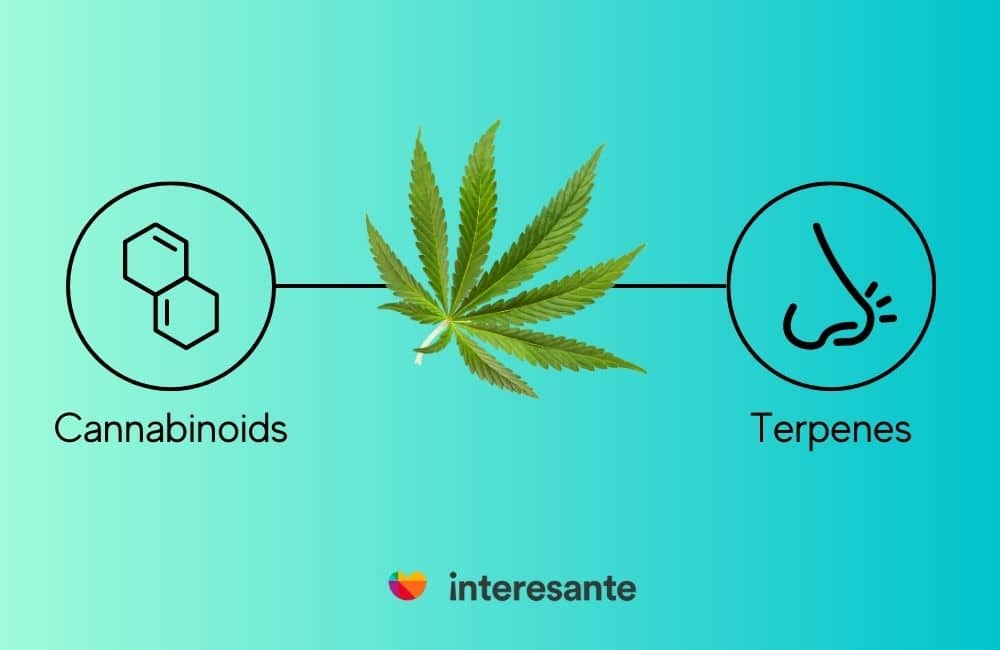AI Product Developer
In various dispensaries across countries like Canada, the United States, and the Netherlands, cannabis flowers are typically classified based on their strains. Cannabis strains are commonly categorized into three groups: Indica, Sativa, and hybrid.
Although many believe that these classifications can predict the effects of a strain, the scientific community is adopting a more nuanced understanding based on cannabinoids and terpenes, the compounds that constitute the chemical profile of a strain. In this guide, I will explain the differences between Indica and Sativa strains, as well as the utility of both classification systems and the importance of cannabinoids and terpenes.
Indica vs. Sativa: Understanding the Basics
Cannabis strains have traditionally been classified into three categories based on the effects reported by users. On one hand, Indica cannabis strains are often associated with a sense of relaxation and sedation, making them an ideal choice for enjoying a movie and unwinding from everyday stress. On the other hand, Sativa strains are known for providing energy and stimulation, making them suitable for physical activities, social events, and creative projects. Finally, hybrid strains offer a combination of indica and sativa effects, granting them a unique balance.
Although cannabis classifications like indica and sativa are widely recognized by consumers, it is crucial to consider that they do not always accurately predict the effects of a specific strain. This is because the indica and sativa labels are based on botany and describe the physical structure of the plant, rather than the effects it produces. Furthermore, the individual chemistry of each person can influence how strains affect each individual, resulting in different experiences for each user.
Consequently, many dispensaries are adopting a more appropriate approach to classifying cannabis, focusing on the chemical profile of the plant. This method is based on analyzing the cannabinoids and terpenes present in cannabis. This shift is occurring because terpenes and cannabinoids, which are abundant in the cannabis plant, can more accurately predict the sensations produced by strains. With over 100 cannabinoids and approximately 200 terpenes present in cannabis, it is the unique combination of these compounds that determines the specific effects a consumer may experience.
This new classification system allows users to better identify which strains may be more suitable for their needs, providing them with a more personalized experience tailored to their preferences and goals.
Cannabinoids and Terpenes: The Key to Understanding Cannabis

Cannabis strains have unique chemical profiles that interact differently with each individual’s body chemistry. While the indica/sativa/hybrid model offers a basic understanding of a strain’s potential effects, a more complex and specific method involves examining a strain’s blend of cannabinoids and terpenes.
Cannabinoids, such as THC and CBD, are the chemical compounds responsible for the psychoactive and medicinal effects of cannabis. Terpenes, on the other hand, are volatile organic compounds that give each strain its characteristic aroma and flavor. They have also been found to influence the effects of cannabis, as they interact with cannabinoids and modulate their effects.
How to Use the Indica, Sativa, and Hybrid Method
When choosing a strain, the indica/sativa/hybrid classification can provide a general idea of its effects. Indicas are often recommended for relaxation, sativas for productivity, and hybrids for a combination of both. While this method is not exact, it can help consumers make an informed decision when selecting a strain.
How to Use the Cannabinoids and Terpenes Method

Cannabinoids and terpenes are essential for determining the effects of different cannabis strains, providing a better understanding of their properties than the traditional indica and sativa classification. Cannabis strains can be more accurately described based on their chemical profile, which includes three types : Type I (high THC, low CBD), Type II (balanced THC and CBD), and Type III (high CBD, low THC). Additionally, the terpenes present in cannabis strains can influence their effects.
To choose a cannabis strain based on the cannabinoids and terpenes method, it is important to consider factors such as tolerance, dosage, body chemistry, environment, consumption method, medical history, mood, and desired experience. Using strain databases from various distributors or dispensaries and keeping a record of favorite and least preferred strains can also be helpful in discovering new strains with similar levels of cannabinoids and terpene profiles.
Combining Both Models for Accurate Selection
By merging the indica/sativa/hybrid and cannabinoids/terpenes methods, consumers can gain a more comprehensive view of cannabis strains and their effects. This combined approach allows for more informed and personalized decisions when selecting a strain, considering both traditional classifications and specific chemical profiles.
Integrating Approaches and Promoting Education for Personalized and Efficient Cannabis Strain Selection
Both the indica/sativa/hybrid classification model and the cannabinoids and terpenes analysis offer value in understanding cannabis strains. While the indica/sativa/hybrid approach provides a general perspective, the cannabinoids and terpenes model allows for a more accurate and tailored understanding of individual needs. By combining both approaches, consumers can make informed decisions and select the most appropriate strains based on their personal preferences and requirements.
Education plays a crucial role in responsible and safe cannabis consumption. Knowing the different chemical profiles, as well as the effects and properties of each strain, allows users to make conscious and personalized choices. Disseminating scientifically backed information about cannabinoids, terpenes, and classification methods is essential for breaking stigmas and promoting a broader and more nuanced understanding of cannabis. By fostering education and knowledge in this area, consumers will be better prepared to choose and use cannabis strains in an appropriate and beneficial manner for their specific needs.












